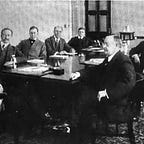Stocks Look Cheap But Might Not Be
Since the March 2020 selloff, many companies have either seen their stock prices recover their losses or even surpass their values, such as Tesla. Other companies are still trading below their peak stock prices just before the selloff began. The lower stock prices are giving an impression to many retail investors that stocks are still cheap, even though the major market indices are trading at a record high.
If you look at the stock price for Norwegian Cruise Lines, you might say well it is trading at half the price it was trading at the pre-pandemic level. What better ways to double your money without doing any due diligence right? This is a misperception for many investors, especially new investors who do not realize that just looking and comparing the stock price will not be a sound investment strategy for long-term investors.
Before I get into the specifics, I would try to clarify several things here. If you look at the ‘Mkt Cap’ below the screenshot I just posted, this number represents the total market capitalization of the company. When a company is trading on the stock market, it will have a certain number of shares issued, which is known as shares outstanding. The basic formula for the market cap is the number of shares outstanding multiply by the current stock price.
Market Cap = # of Shares * Stock Price
When the COVID-19 pandemic restricted economic activity, it severely impacted many industries. Revenues can disappear instantly, but costs still appear in a business. For example, even if cruise ships were not moving, the industry still had to pay for fixed expenses, such as insurance, salaries, security, debt, interest payments, etc. Since there was no money coming in, and there is only a limited amount of cash a company keeps, companies had two options to raise money. Either they can borrow money (debt) or issue more shares. Many companies choose to do both for numerous reasons.
Now, if a company raises debt, it will increase the interest payments it has to pay in the future, so there is less money left for equity shareholders. If a company issue more shares, then the existing shareholders get diluted and now own less of the company. When the number of shares outstanding increases, it means existing shareholders are getting diluted. For Norwegian Cruise Lines (NCLH), the number of shares increased from a little over 200 million to almost 370 million, according to their latest filings.
So, let’s do some math here. Before the March selloff, the stock was trading around $50 per share, and multiplying by 200 million shares outstanding at the time, gives us a market cap of approximately $10 billion. Now, 370 million shares are outstanding, so a share price of $25 gives us a market cap of $9.3 billion. While it is still below the market cap before the pandemic, it is not as cheap as compared to its pre-pandemic value. Also, NCLH borrowed money as well, so not only do equity shareholders got diluted but also the creditors own a higher claim on the company’s profits.
I have seen many investors simply look at the stock price before and after the pandemic to justify their stock purchase. Norwegian Cruise Lines is only one of the many companies that I have seen to show a lower stock price, yet a higher market cap (which means shares were issued). Issuing shares is not the worst thing a business can do, especially when the business needs cash. Many investors see a company issuing shares as a bad sign, which is not always the case. Every company is different, and it is important to study the reasons behind the company issuing more shares, and investors should know both the positive and negative impact it can have on their investments.
If you are comparing a company’s value between two periods, make sure to check whether the overall market cap has changed. What might look cheap right now, in reality might be more expensive.
